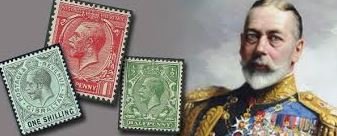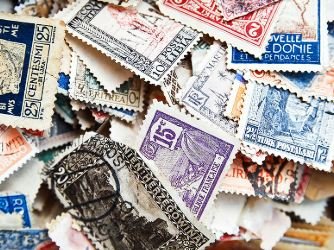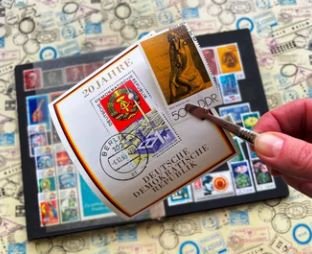The National Postal Museum Archives stands as a testament to the rich history of the United States Postal Service (USPS) and its profound impact on communication, commerce, and culture. As a cornerstone of postal history, the museum’s archives house an extraordinary collection of artifacts, documents, and exhibits that span centuries of postal service in the U.S. From stamps and mail carriers to the stories behind significant postal events, the archives are an invaluable resource for understanding the development of mail systems and their role in society. However, like many historical institutions, the National Postal Museum Archives is not without its share of controversies, challenges, and debates that have added complexity to its legacy.

The Rich Legacy of the National Postal Museum Archives
The National Postal Museum Archives is part of the Smithsonian Institution, a symbol of the importance placed on preserving the history of the USPS. The museum itself is dedicated to the history of American mail, showcasing the essential role the postal system has played in shaping the nation. Within the archives, visitors can explore over 12 million items that tell the story of how the U.S. Postal Service evolved from its early days in the 18th century to its current form, illustrating its influence on the growth and development of the country.
One of the most significant aspects of the National Postal Museum Archives is its comprehensive collection of postal history. This includes everything from the evolution of postage stamps, iconic postal routes, and the stories behind notable figures in postal history, to items related to the technical and logistical advances in mail delivery. The museum holds artifacts such as historical letters, rare stamps, and tools once used by postal workers, all of which help to paint a vivid picture of how mail has connected people and communities throughout history.
The National Postal Museum Archives is also home to many rare and unique pieces of postal history that have become important symbols of American culture. The famous “Inverted Jenny” stamp, for example, is one of the most valuable stamps in the world, and its preservation within the museum archives highlights the cultural significance of stamps as historical documents. Similarly, the archives contain original correspondence from prominent historical figures, revealing how the postal system helped shape key moments in American history, from the Civil War to the Civil Rights Movement.
The Unsettling Controversies Surrounding the National Postal Museum Archives
While the National Postal Museum Archives boasts a rich and diverse collection, it is not without its share of controversies. The most notable of these concerns issues surrounding the ownership, preservation, and interpretation of certain artifacts within the collection. As with many museums, questions about the origins of items and whether they were acquired ethically have arisen over time. Some critics have raised concerns about the provenance of specific historical artifacts, questioning whether they were obtained under circumstances that align with modern ethical standards.
One controversy that has long surrounded the National Postal Museum Archives is the collection’s reliance on private donations. While donations play an essential role in expanding and preserving the museum’s holdings, some have argued that the practice can sometimes create conflicts of interest. Some argue that artifacts donated by wealthy individuals or organizations may come with strings attached, potentially influencing the way certain pieces are represented or interpreted within the museum. This has sparked debates about the role of private donors in shaping the narrative of U.S. postal history.
Additionally, the National Postal Museum Archives has faced criticism for its focus on the more celebratory aspects of postal history, while downplaying or neglecting certain less comfortable truths. For example, the history of how the postal system has been used for surveillance, or its role in suppressing certain types of communication during periods of war, has been less prominent in the archives’ exhibits. This has raised concerns that the museum may not fully address the darker chapters of postal history and how the system has been used for purposes other than connecting people.

Another unsettling controversy surrounds the preservation of certain items within the National Postal Museum Archives. As the collection continues to grow, the challenges of conserving delicate materials, such as old letters, stamps, and equipment, have become more pronounced. The museum has faced criticism for insufficient resources allocated to conservation efforts, leading to concerns about the long-term preservation of its vast collection. Inadequate storage and the risks associated with aging materials have prompted calls for more investment in preservation technologies to ensure the integrity of the archives for future generations.
The Role of the National Postal Museum Archives in Education and Public Engagement
Despite the controversies, the National Postal Museum Archives continues to play a pivotal role in education and public engagement. The archives offer an opportunity for researchers, historians, and enthusiasts to delve deeper into the evolution of the postal system and its broader cultural significance. Educational programs and public events provide visitors with hands-on experiences that bring the history of postal communication to life, showcasing how the postal system has influenced art, culture, and even the development of modern technology.
The museum’s archival collection is also increasingly accessible to online audiences. Digital archives have allowed scholars and the general public to explore a wealth of materials remotely, making the National Postal Museum Archives a vital resource for those interested in postal history. This expansion of digital access has helped to democratize knowledge and broaden the reach of the museum, enabling it to engage with a more diverse audience and encourage greater understanding of its exhibits.
Moreover, the National Postal Museum Archives has made efforts to address some of the criticisms it has faced. By initiating more inclusive exhibits and offering public programming that explores both the positive and negative aspects of postal history, the museum has worked to offer a more balanced perspective. This shift demonstrates the institution’s awareness of its responsibility to present a nuanced view of history, acknowledging both the triumphs and the troubling aspects of the postal system’s past.
The Future of the National Postal Museum Archives
Looking ahead, the National Postal Museum Archives is poised to continue its role as a major institution for preserving and interpreting postal history. However, addressing the controversies and challenges it faces will be essential for its continued relevance and credibility. Efforts to ensure ethical acquisition practices, better preservation techniques, and a more balanced portrayal of postal history will be key in shaping the future of the archives.
By embracing the complexities of its history and addressing the unresolved issues, the National Postal Museum Archives can continue to grow in significance and remain a trusted resource for understanding the critical role of the postal system in American history.

The National Postal Museum Archives not only preserves the history of the U.S. Postal Service but also sheds light on the role mail has played in pivotal moments in history, including elections. Just as the archives document the evolution of the postal system, they also reflect the growing significance of Election Mail over time. The National Postal Museum Archives houses materials that highlight the development of postal services for elections, showing how the mail system has been central to ensuring voter participation and democracy. For a deeper look at the vital role of mail in U.S. elections, you can explore the article What is Election Mail and its History, which delves into how Election Mail has evolved over the years.
Conclusion
The National Postal Museum Archives is a rich and dynamic collection that tells the fascinating story of postal history in the United States. While the archives offer a treasure trove of historical artifacts and knowledge, they are not without their unsettling controversies. From questions about ethical acquisitions to challenges in preservation and interpretation, these controversies have shaped the museum’s legacy. Nonetheless, the National Postal Museum Archives remains an invaluable resource for scholars, historians, and the general public, and its continued evolution will play an important role in preserving and interpreting the history of the USPS for generations to come.



